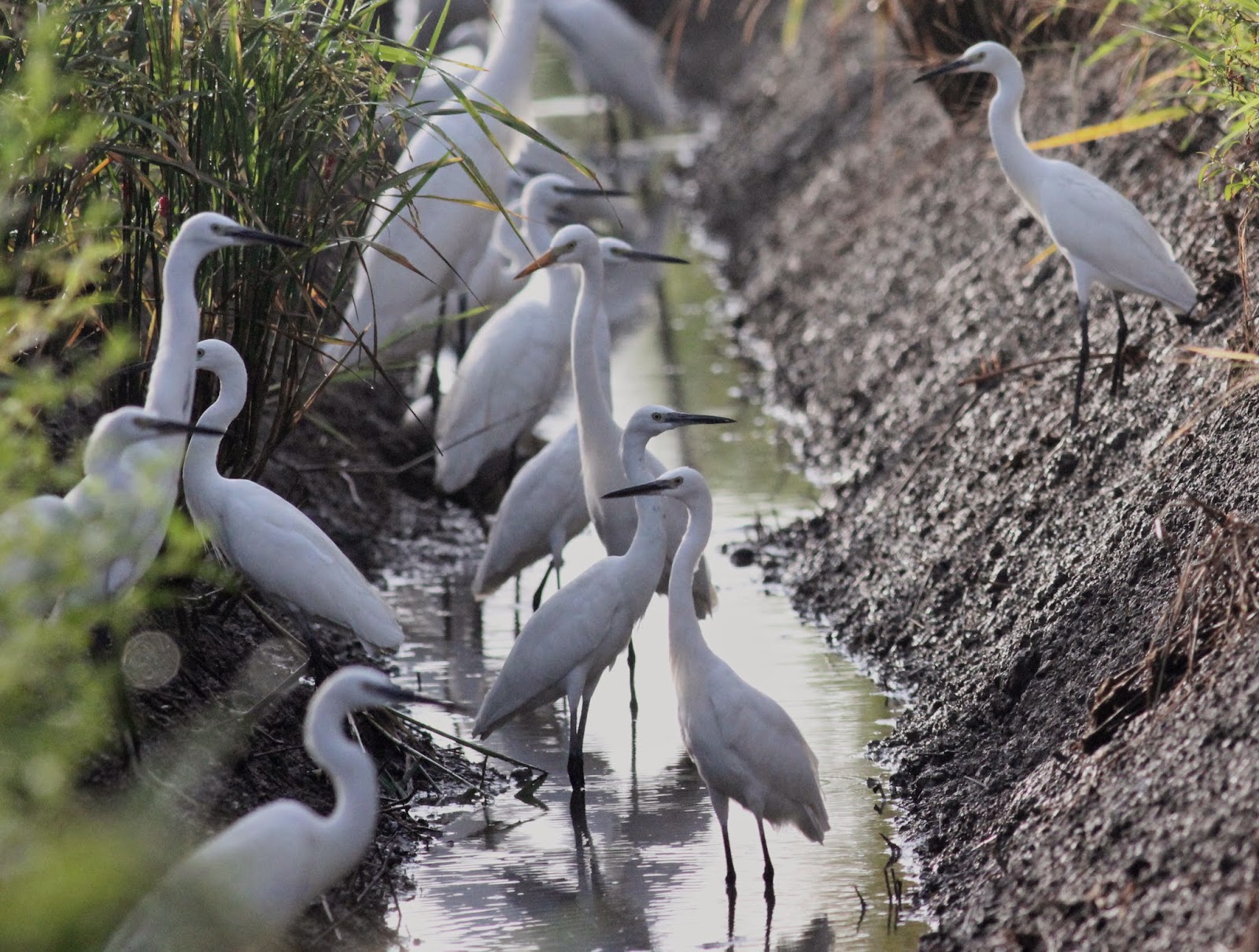After spending a few exhilarating moments at the mudflats of Bagan Belat under the scorching sun, i figured that its about time to adjourn to a much cooler area. Some senior birders would gladly inform you that there are a few birding sites which you should continue visiting, just like it would be compulsory for you to visit your mother-in-law's house every month if not every week. Aside from Mount KK in Sabah or probably Gunung Telapa Buruk in Negeri Sembilan, i think there are not many mountains in Malaysia which are able to have such an amazing variety of birds in such a small loci.

The Mountain before the break of dawn.
A typical landscape of this Mountain.
The moss covered floor created a spongy like feeling when you walk on them.
As the sun comes out so did the birds.
Here are some of the birds, both common and probably uncommon ones which you might get to see them in this mountain as of May 2014.
It looks like a Mountain Leaf Warbler but from the amount of white color on its tail you might probably not discount it as a "White-Tailed Leaf Warbler". Seen foraging alone.
 |
| Little Cuckoo Dove |
Little Cuckoo Dove is more common in Fraser's Hill then here.
 |
| Bar-Throated Minla |
Feeding time for these colorful and friendly Minla. Previously this bird was named Chestnut-Tailed Minla (Minla strigula).
 |
| Chestnut-Crowned Laughingthrush |
Another colorful and friendly bird up here.
 |
| Long-tailed Sibia |
 |
| House Swift |
This swift is also known as "Little Swift" (Apus affinis) or is it (Apus nipalensis)?
 |
| Mountain Bulbul |
 |
| Grey-Throated Babbler |
From the color of its lighter greyish throat i guess these Grey-Throated Babblers were from the "S. spadix" subspecies and not from the "coltarti".
 |
| Black-Eared Shrike Babbler |
Have yet to get any decent photos of this bird but it looks like its either a female or a juvenile as the male bird is usually more colorful than this one.
 |
| Rufous-Winged Fulvetta |
Another common Mountain Bird
 |
| Golden Babbler |
Like most babblers, a sulker which hardly stays at one place for a minute.
 |
| Common Green Magpie |
It was probably saying: "Hello its me"
Let me see whether there is anything here!
Nope! no suspected aliens here. All looks clear.
Please note that this is not a feral bird nor was it lost or "sesat" in some city. It was actually a wild bird which has just perched on some human made structure in this Mountain.
BTW: you may have noticed that the above Green Magpie has traces of blue on its back and tail. You might also aware that there are Common Green Magpies which are blue in color. Here is an explanation which i have obtained from the web: "Green magpies' green feathers will fade to turquoise-blue when they are frequently exposed to the sun because the sun's ultra violet rays will destroy the color pigments in the birds feathers (i.e carotenoids). In addition, the lack of carotenoids in their diet was also thought to contributed to the existence of blue plumage when moulting". Amazing right but why it happens only to Common Green Magpies and not to other green feathered birds !
 |
| Mountain Leaf Warbler |
The first photo probably shows a juvenile Mountain Leaf Warbler. The absence of any clear bars on its wings would discount it from other warblers. However like most warblers this warbler has many subspecies and variation of colors. Apparently in Sabah, its Mountain Leaf Warbler (P. trivirgatus kinabaluensis) has notably paler plumage (more whitish) rather than yellow (Suara Enggang, Vol. 21/4 Dec. 2013, pp 18).
 |
| Mountain Fulvetta |
Mountain Fulvetta is more common at Fraser's Hill rather than at this Mountain.
 |
| White-Throated Fantail |
A common montane bird.
 |
| Large Niltava - female |
 |
| Large Niltava - Male |
A lovely and friendly resident couple.
I believe this is a Large Niltava - Junior
 |
| Mountain Tailor Bird |
 |
| Black-Throated Sunbird - Female |
 |
| Bay Woodpecker |
Some field guides have described this woodpecker as "common" but this was the first time i have seen it at this location. Although other birders have also seen it before (at this location) but the frequency of sighting were certainly not really frequent. Despite the lack of a red patch below its neck, it should be a Bay Woodpecker with the black bars on its wings and the location of its sighting. I have also heard some soft drumming coming from this woodpecker.
 |
| Chestnut-capped Laughingthrush |
Another common resident bird but it appears like this laughing thrush numbers are dwindling. Only seen a few as compared to the more numerous Chestnut-Crown Laughingthrush at this location. Maybe they may have moved down to the lower part of this mountain and let the Chestnut Crowns to occupy the higher regions.
 |
| Silver-Eared Mesia |
Silver-Eared Mesia is exceptionally more common in Fraser's Hill than at this Mountain region.
 |
| Javan Cuckooshrike |
A common cuckooshrike which you might encounter in the many mountains / hill stations.
PLEASE ADVOCATE ETHICAL BIRD PHOTOGRAPHY AND BIRD WATCHING TO OTHERS !
HAPPY BIRDING !
NOTE: ULU KALI MOUNTAIN IS NOW CLOSE TO PUBLIC ! YOU CAN'T ACCESS THERE ANYMORE ! NO THANKS TO SOME OVER ZEALOUS PHOTOGRAPHERS !































































